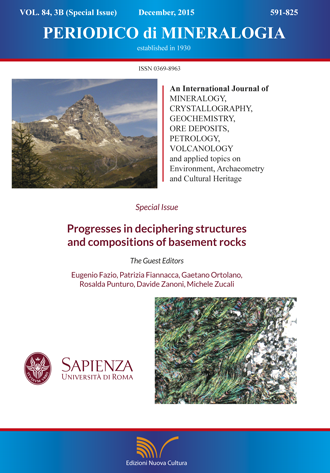The Calabria-Peloritani Orogen, a composite terrane in Central Mediterranean; its overall architecture and geodynamic significance for a pre-Alpine scenario around the Tethyan basin
DOI:
https://doi.org/10.2451/2015PM0446Keywords:
Variscan crystalline basements, Alpine orogeny, paleogeography, Calabria and NE SicilyAbstract
The Calabria-Peloritani Orogen is an arcuate segment of the peri-Mediterranean orogenic Alpine nappe system that comprises the whole Calabria and the north-eastern sector of Sicily. It comprises the Sila and Catena Costiera Massifs in northern Calabria, the Serre and Aspromonte Massifs in central and southern Calabria, and the Peloritani Mountains in Sicily.
In Sila and Catena Costiera Massifs, three tectonic complexes are recognisable: a) the basal Apennine Complex, which consists of carbonate platform sequences of passive continental margin; b) the intermediate Liguride Complex, made of oceanic-derived units, affected by HP/LT metamorphism; and c) the upper Calabride Complex, which represents a nearly entire section of continental crust. The Catanzaro Line separates the northern sector from the Serre Massif that also represents a nearly entire segment of Variscan continental crust unaffected by Alpine metamorphism. Further to the south, the Palmi Line separates the Serre from the Aspromonte Massif and the Peloritani Mountains. These two latter nappe edifices consist of either Variscan metamorphic units, Variscan units with Alpine overprint and units of continental derivation that are exclusively affected by Alpine metamorphism. The comparison between the geological evolutions of the various chain sectors, as well as their structural setting and their direction of tectonic transport, indicates that the Calabria-Peloritani Orogen is a composite terrane derived from the amalgamation of crustal blocks of different continental provenance. Northern Calabria represents a fragment of the Adria palaeomargin, whereas southern Calabria and northeastern Sicily are relics of an accretionary wedge resulting from the deformation of the European continental margin. As a consequence, nowadays a segment of the Europe-Adria collisional suture crops out in central Calabria.


